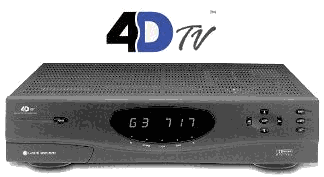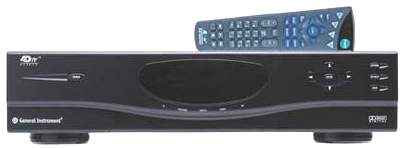Motorola 4DTV Satellite Technology
4DTV technology was originally developed in 1997 by General Instrument which is now a division of Motorola, making Motorola the sole owner of the technology. 4DTV describes signals that use the DigiCipher 2 standard of signal encryption and compression. DigiCipher 2 was originally intended to be the digital signal compression standard for digital television and audio signals beamed to North America, and thankfully it wasn't. About 70% of newer first-generation digital cable networks in North America now use the 4DTV (DigiCipher 2) format.
The 4DTV receiver combines the benefits of analog, Ku-band, and digital systems. It delivers both digital and analog signals. A modern 4DTV receiver as of 2007 has the capability of receiving more than 500 channels of audio and video.
4DTV has been manufactured under different company names, such as Next Level, G.I, and Motorola. G.I is currently owned by Motorola. Next Level was only a subdivision of G.I and this name is no longer in use.
Contents
Equipment
The following formats can be received with a Motorola 4DTV receiver:
- DigiCipher II Channels
- Scrambled VideoCipher II Plus Channels
- Standard Analog Channels (the few that are left)
Motorola advertises their 4DTV receiver as "two receivers in one," because it allows the viewing of both analog and digital channels with an integrated graphic user interface.
The following are known Motorola 4DTV receiver models:
The DSR-922 is now recommended as the older 920 will not receive some of the programming available. Also, when the battery goes dead in older 920 units the ID is lost and the unit becomes a brick.
* A used DSR-922 should run about $250 average price.
- They also have a "DSR-905 sidecar" which is designed to be connected to a legacy analog receiver.

- The discontinued HDD200 receiver was designed for high definition channels.
- DSR-921 was a receiver marketed for use in Canada.
Only General Instrument consumer level receivers are called 4DTV receivers, those made by Motorola, the sole owner of the technology. There are no other manufacturers of 4DTV satellite receivers. Although 4DTV receivers have a renewable security slot, this slot currently serves no purpose. Any receiver that uses a CAM, H-Card or Hu-Card is not a 4DTV receiver.
To use 4DTV you need a big dish. You need an 8ft dish minimum, although 10ft is better. The dish must be motorized as the 4DTV channels are provided by multiple satellites in space. People living in the midwest can possibly get by with a 6ft dish. Individuals living on the east or west coast of North America will be best served by a 10ft or larger dish.
4DTV Dish and Receiver configuration examples: 1. DSR922 receiver on a 10ft motorized dish with Chapparell dual lnb Corotor ll.
There is a combination Ku and C band LNB available that will work with linear transponders. You can also use the same dish to receive FTA channels, but you will have to add another LNB to the unit and use a seperate FTA receiver. To move the dish you will have to use the 4DTV receiver and then to view the FTA channels you will have to use the FTA receiver - which is kinda less than ideal, but a way to use one dish for all.
Format
4DTV digital channels use a "An nnn" format, where "An" is the special two-character satellite abbreviation and "nnn" is an arbitrary three-digit channel number assigned to a specific channel on a particular satellite. 4DTV receivers are also designed to receive any remaining analog TVRO satellite channels and feeds.
Many experts expect 4DTV to become obsolete by about 2010. However, since 4DTV is used for the primary feeds to cable and small dish providers, and has much higher quality over DVB, it may be around much longer. The transmissions were not really meant for the consumer, it is meant for other providers to receive primary feeds that they bundle and rebroadcast to the consumer. However, 4DTV as a term is meant for direct consumer marketing.
Hacks
4Play
4Play allows you to read the channel definitions sent by Motorola - channels such as HBO, Showtime and PBS - and then merge these definitions with your own special channels that aren't defined by Motorola despite their unencrypted transmission on satellite.
JTag
This is the illegal use of equipment modified to receive paid subscription programming free.

